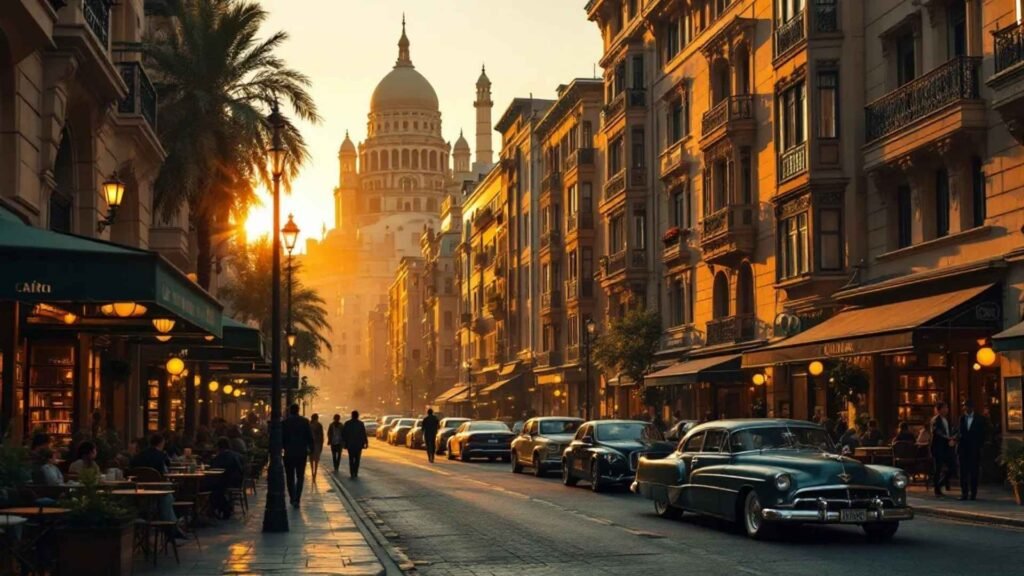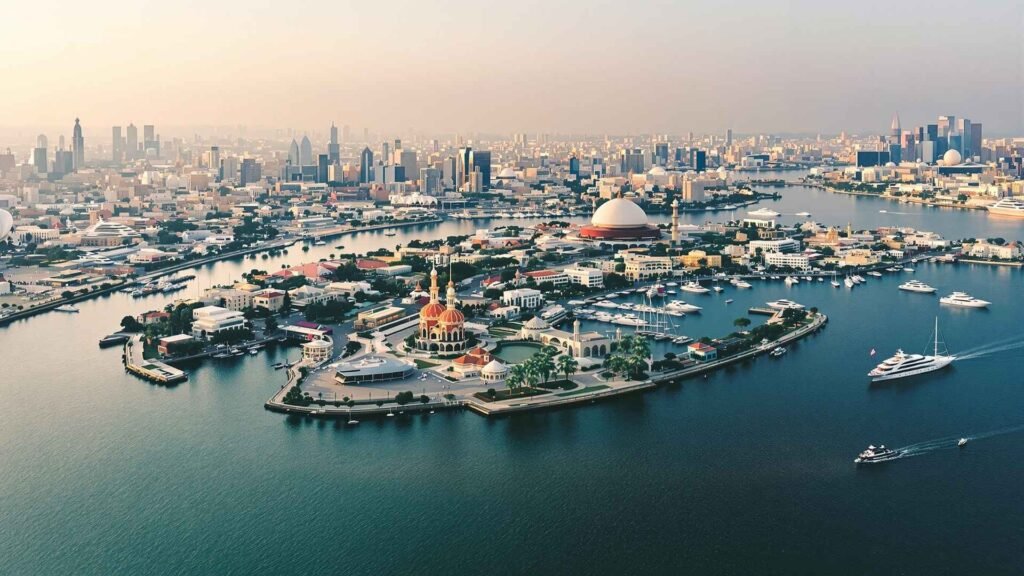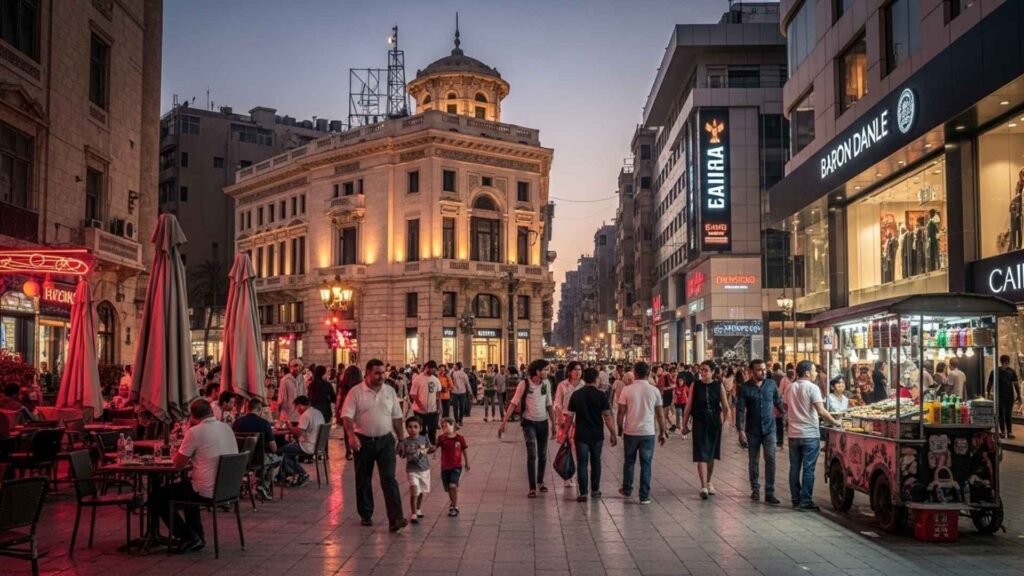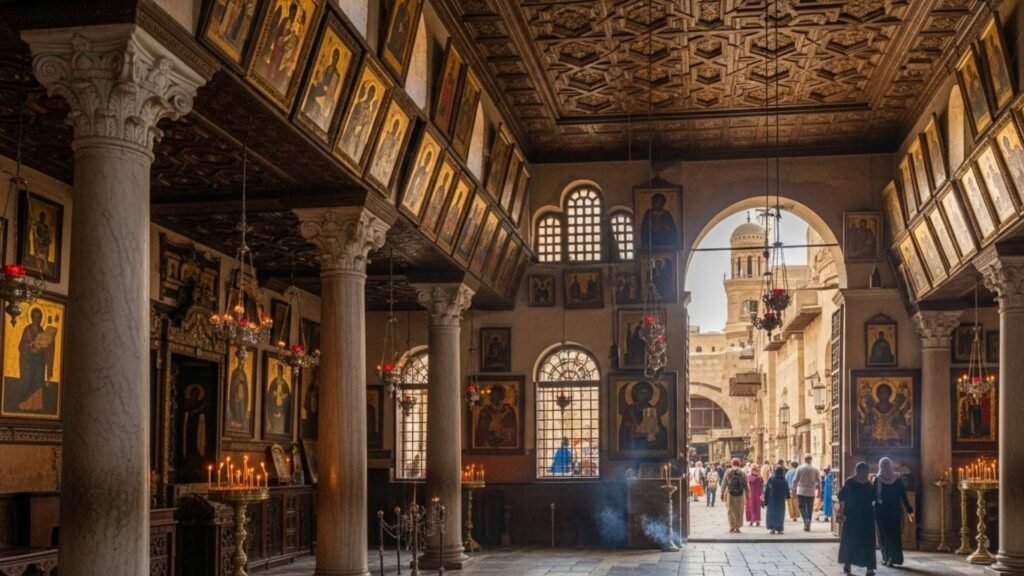Cairo is often described as a city of layers—a metropolis where ancient civilizations, medieval traditions, and modern lifestyles all coexist. For international visitors, one of the best ways to understand Cairo’s soul is to explore its neighborhoods. Each district has its own atmosphere, architecture, and community, offering a unique perspective on Egyptian culture and daily life. From leafy Nile islands to bustling downtown boulevards, Cairo’s neighborhoods are a mosaic of history and modernity.
1. Downtown Cairo – Belle Époque Elegance & Urban Energy

Known locally as “Wust el-Balad”, Downtown Cairo is the beating heart of the modern city.
- History & Architecture: Designed in the late 19th century under Khedive Ismail, Downtown was heavily influenced by Parisian urban planning. Wide boulevards, ornate façades, and neoclassical buildings still echo Cairo’s Belle Époque.
- Cultural Life: The district is filled with historic cafés like Café Riche, where revolutionaries and intellectuals once gathered, and bookstores such as Diwan or Al Kotob Khan that keep the literary spirit alive.
- Landmarks:
- Tahrir Square – Symbol of Egypt’s political history.
- Egyptian Museum – Home to ancient treasures, including Tutankhamun’s artifacts.
- Abdeen Palace – A 19th-century royal residence.
- Lifestyle Today: Downtown buzzes day and night with street vendors, art cinemas, and trendy rooftop cafés. It’s a place where old meets new.
Vibe: Vibrant, historic, and intellectual—perfect for travelers who love city energy and culture.
2. Zamalek – The Green Island of Art & Diplomacy

Set on Gezira Island in the middle of the Nile, Zamalek is Cairo’s cultural and diplomatic hub.
- Ambience: Unlike the chaos of other districts, Zamalek feels calm, leafy, and elegant, with jacaranda trees lining its quiet streets.
- Art & Culture:
- Cairo Opera House – The city’s premier venue for ballet, opera, and concerts.
- Contemporary art galleries such as Zamalek Art Gallery and Ubuntu.
- Music and cultural festivals often hosted along the island.
- Dining & Nightlife: Upscale restaurants serving global cuisine, rooftop terraces overlooking the Nile, and stylish cocktail bars.
- Shopping: Boutiques selling designer clothing, artisan jewelry, and antiques.
- Community: Home to many embassies and expats, Zamalek offers a cosmopolitan feel that blends local life with international flair.
Vibe: Artistic, stylish, and relaxed—an oasis for culture lovers.
3. Heliopolis – A Modern Hub with Historic Foundations

Founded by Belgian industrialist Baron Empain in the early 20th century, Heliopolis was originally envisioned as a “garden city.” Today, it’s one of Cairo’s most dynamic residential and commercial districts.
- Architecture: The neighborhood’s historic villas showcase Art Deco, Moorish Revival, and European styles. The Baron Empain Palace, modeled after a Hindu temple, is one of Cairo’s most eccentric landmarks.
- Shopping & Entertainment:
- City Stars Mall – A massive shopping and entertainment complex.
- Traditional markets offering everything from spices to textiles.
- Food Scene: Known for authentic Egyptian street food like shawarma, falafel (taameya), and fresh pastries, as well as international dining spots.
- Lifestyle: Popular among middle and upper-class families, with tree-lined avenues, schools, and social clubs. At night, the area comes alive with cafés and restaurants buzzing with young people.
4. Old Cairo – The Spiritual Heart of the City

Old Cairo, also called Coptic Cairo, is where religion and history converge. It is one of the oldest parts of the city, offering an unparalleled spiritual experience.
- Christian Heritage:
- The Hanging Church (Al-Muallaqa) – Built above a Roman gatehouse, it remains one of Egypt’s most important Coptic Christian sites.
- Church of Saints Sergius and Bacchus (Abu Serga) – Believed to be where the Holy Family sheltered during their flight into Egypt.
- Church of Saint Barbara – A shrine to one of early Christianity’s martyrs.
- Jewish Heritage: The Ben Ezra Synagogue, connected with Jewish and Islamic traditions, is a reminder of Cairo’s once-thriving Jewish community.
- Islamic Landmarks: Nearby lies the Amr Ibn Al-As Mosque, the very first mosque built in Africa.
- Museums: The Coptic Museum preserves centuries of Christian art, manuscripts, and relics.
- Atmosphere: Narrow lanes, ancient stone walls, and the scent of incense create a timeless aura.
Vibe: Sacred, contemplative, and historic—a place for spiritual reflection and cultural immersion.
5. Neighborhood Vibes at a Glance
- Downtown Cairo → Historic elegance, political history, and urban energy.
- Zamalek → Leafy island, art, diplomacy, and cosmopolitan lifestyle.
- Heliopolis → A lively hub mixing historic villas with malls and nightlife.
- Old Cairo → Spiritual heritage, ancient churches, and interfaith coexistence.
Conclusion
Cairo is not a single city—it’s a collection of worlds. Each neighborhood, whether it’s the Paris-inspired boulevards of Downtown, the leafy artistic enclave of Zamalek, the bustling modern energy of Heliopolis, or the sacred streets of Old Cairo, offers its own doorway into Egyptian culture. Exploring these districts allows travelers to go beyond the monuments and experience Cairo as its residents do—dynamic, diverse, and deeply rooted in history.
Want to Explore Further? 👉 The History of Cairo: Back to the Cairo Travel Guide

